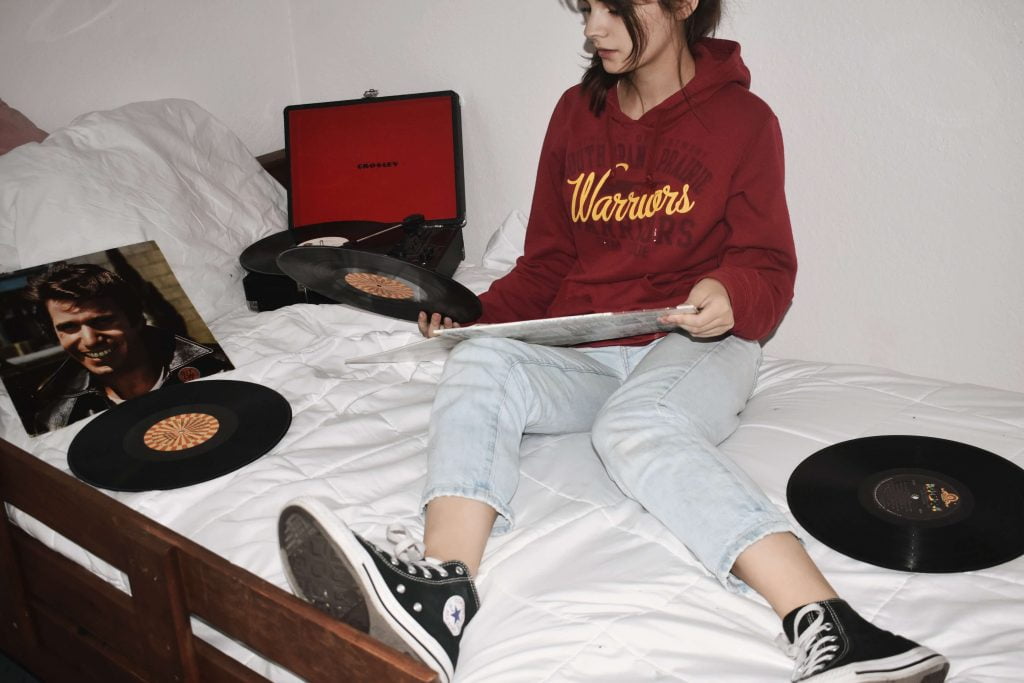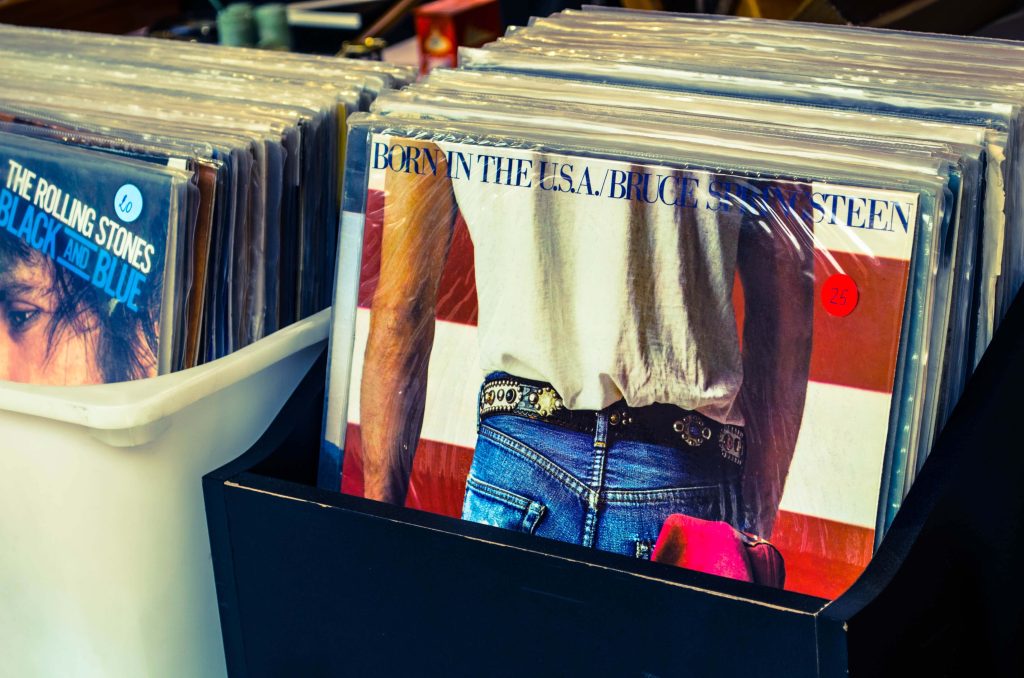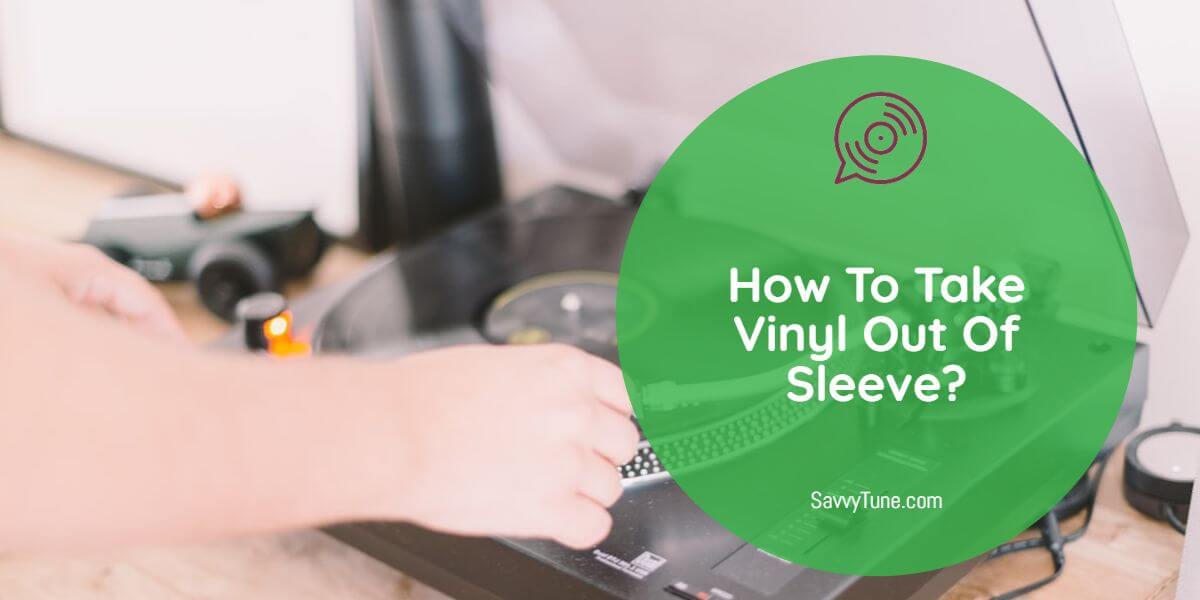Handling vinyl records is like handling a baby. It could be stressful, especially for new parents, I mean new vinyl collectors. Vinyl records are prone to scratching or breaking as a result of them falling out of their sleeves. So, how to take vinyl out of the sleeve properly?
This is an important issue, and you should know exactly how to take your vinyl out of its sleeve without causing damage. All you need to do is make sure your hands are clean, pull the inner sleeve out, and slide the record into your hand.
It sounds easy, right? Well, let’s find out more about vinyl sleeves and the proper way to handle your records. Keep scrolling.
How To Take Vinyl Out of Sleeve?
Due to their fragile nature, vinyl records can be easy to mishandle. That’s why it’s quite essential to know the proper way to handle vinyl records.
Vinyl Albums Protective Sleeves
Basically, vinyl records come inside three protective layers, which are: the inner sleeve, the jacket, and the outer sleeve. Each one of these three layers secures the record in place, only if positioned correctly.
That’s because placing one of these layers facing the wrong direction might cause it to lose its function and consequently, cause the vinyl record to fall out. Unfortunately, not all records are able to survive such a fall.
The Inner Sleeve
The inner sleeve is the record’s first line of defense. It’s the protective layer that keeps your vinyl record from getting scratched when you slide it back into its covers.

Usually, the inner sleeve is made out of paper. However, it’s highly recommended that you replace the ordinary paper inner sleeves with polyethylene-lined sleeves. Polyethylene offers a safe, antistatic environment for your precious record collection.
The Jacket
The record’s jacket is the main album cover or the outer casing of the record. It’s the wrapping that you slide the record into, and it’s usually made of cardboard, with the album design printed over it.
The record’s jacket comes in many styles, the most common of which is either a single-pocket or foldable record jacket.
The Outer Sleeve
The outer sleeve is usually a clear plastic cover that protects the record’s jacket. Vinyl records don’t come with outer sleeves as a default. Instead, they’re often shrink-wrapped inside a clear film.
Vinyl collectors often buy those outer sleeves for extra protection to maintain the jacket’s original state. This way they avoid tears and scuffs that happen to the weak cardboard material.
The Proper Steps of Taking Vinyl Out of Sleeve
Now that you know everything about vinyl records’ outer protection, it’s time to get to the main part: how to take the record out of its sleeve.
Users also read: How to fix a Wobbly Record Player?
Step #1: Make Sure Your Hands Are Clean
It’s absolutely crucial to wash your hands before handling vinyl records in any way. Dust and dirt are easily transferred from your hands to the records. This is the number one cause of record scratching.
It may seem that a bit of dust is harmless, however, with accumulation and over time, dust can have a serious impact on the quality of your record collection. That’s why professional vinyl collectors choose to wear lint-free gloves before touching the records.
Step #2: Remove the Jacket From the Outer Sleeve
You should always pay attention to the direction of each cover that the record is inside. The outer sleeve should be facing up, while the opening of the record’s jacket should be to the side.
This way you’re completely sure that the record is safely intact. So, lift the jacket out of the outer sleeve and hold on to it.
Step #3: Open the Jacket Carefully
Whether it’s a pocket jacket or a foldable one, the opening should always be facing upwards toward your direction. This way you make sure that there’s no possibility of the vinyl record slipping and falling to the ground.
Step #4: Pull the Inner Sleeve Out
Just like the second step, the inner sleeve’s opening should be facing up. That’s to make sure that even if you tilted the cover, the record won’t slip out of it.
So, all you need is to carefully pull the inner sleeve with the record inside. Don’t forget to proceed with caution.
Step #5: Slide the Record Out
Hold the inner sleeve, flip it over gently, and slide the record into your hand. For this specific step, you’ll need to use your index and middle fingers to touch the center of the label. Then, use your thumb to support the record at the edge.
This way you make sure that nothing touches the actual surface of the viny. As such, it remains dust-free as well as scratch-free.

Precautions for Handling Vinyl Records
Now that you know how to properly take vinyl out of its sleeve, there are a few precautions to follow before and after doing so.
What you need to do is the following:
- Make sure that there’s no food or drinks on the nearby surfaces.
- Don’t ever touch the record’s surface which contains the grooves.
- Only touch the edge of the record or the center of the record where the label is.
- Clean all the surfaces that you intend to put the sleeves over once you take the vinyl out.
- Place and handle your record collection in an area that isn’t next to a window where it could be prone to dust.
- Don’t place the record flat on any surface other than the turntable platter or record player.
- Clean the record before playing it using a carbon fiber record brush and never use a soft towel to do so.
- Don’t leave the vinyl record out and return it to its sleeves as soon as you’re done with it.
Handling Vinyl Records While Playing
Knowing how to handle your records properly is just as important as knowing how to take them out of or place them inside the sleeve. There are a few things to pay attention to while playing your vinyl records.
For starters, make sure that you cue the record correctly, as failing to do so can highly damage the disc. Use the cueing lever that’s specifically designed to carefully place the stylus onto the vinyl record’s surface.
Secondly, never pick up the vinyl record while it’s still turning. Instead, you should wait for the turntable platter until it comes to a complete stop. That way you ensure that your disc is safe from scratches.
How To Put Vinyl Back Into Sleeve?
As we mentioned before, it’s absolutely necessary to put the vinyl back and not leave it out longer than it should. That’s because the longer the record stays out, the more dust particles it collects. Eventually, those particles cause scratches and scuffs.
Here’s what to do as soon as you finish playing your record:
- Clean the record with an anti-static brush to remove any dirt buildup or residual dust.
- Hold the record exactly the same way as you did when taking it out of the inner sleeve.
- Slide it back inside the inner sleeve gently.
- Avoid dropping the record into the inner sleeve as this may cause the sleeve to tear.
- Place the inner sleeve back inside the jacket sideways with the opening facing upwards.
- Finally, place the jacket inside its outer sleeve, with the opening of the sleeve facing upwards again.
How To Properly Store Vinyl Records
When it comes to the protection of vinyl records, you can’t only count on the record’s sleeves.
This is because storing records properly plays a huge part in conserving them and protecting them from dents, cracks, and scratches.
Here are the dos and don’ts when it comes to storing vinyl records:
Dos
- Store your vinyl record collection in a cool place.
- As the Northeast Document Conservation Center recommends, store vinyl records at 50–60° F and a humidity level of 30-40%.
- For short-term storage, keep your records standing upright on a shelf next to your record player. Make sure the shelf is strong enough to hold the weight.
- For long-term storage, on the other hand, place your records upright inside a box and store them in a cool, dry place.
- Clean the vinyl record before and after each use to avoid accumulating debris that scratches them while stored.
- Separate your records with dividers to avoid too much pressure that leads to warping.
Must read: Pro-Ject Debut Carbon Evo vs. Rega Planar 1
Don’ts
- Don’t store your vinyl record collection in a hot place, as this may cause them to warp.
- Don’t store vinyl in a high-humidity place, as this can cause significant damage as time goes by.
- Don’t expose your vinyl records to bright lights or direct sunlight, as this may have a damaging effect.
- Don’t leave many records sitting out on a shelf without using them.
- Don’t stack your vinyl records on top of each other, as this causes them to warp and scratch.
- Don’t store your vinyl records without inner and outer sleeves to further protect them from scuffs.
- Don’t store dusty records.

